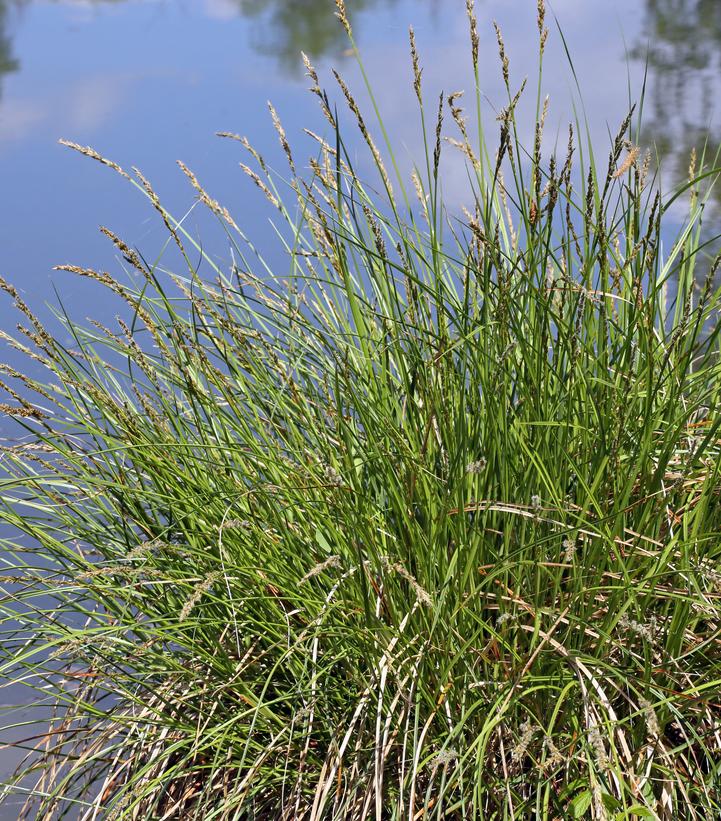« Previous Plant | Next Plant »
Carex stricta
Tussock Sedge
- » Evergreen
- » Native
- » Provides habitat for amphibians and birds
- » Birds and small mammals feed on seed
- » Larval food source for many butterflies
- » Forms a useful tussock
- » Will grow in wet soils or standing water

- Category:Perennial
- Breeder:American Beauties Native Plants
- Hardiness Zone:5-8
- Height:2-3 ft
- Spread:2-3 ft
- Bloom Color: Green Shades
Tussock sedge grows in 2-3' tall clumps about 2' wide. As old leaves die, they build up around the living plant, making a "tussock" or little hill. It grows in or near water and spreads by rhizomes to make new clumps. As new tussocks form, they trap water between them, helping other aquatic plants get established. It also creates quality cover for breeding frogs, toads, salamanders and insects. Plants are great nest and perching sites for birds, including ducks, small herons, swamp and song sparrows, geese, and others. Other birds use leaves and stems to build nests and a number of birds and small mammals such as mallard, wood duck, wild turkey, cardinal, junco, squirrels feed on the seeds.
Foliage Color
| • | Green |
Maintenance and Care
| • | Drought Tolerant |
Critter Resistance
| • | Deer Resistant |
Programs
| • | American Beauties Native Plants® |
Season of Interest (Foliage)
| • | Summer |
Additional Information about Carex stricta
You can tell sedges and rushes apart by remembering the old rhyme, "Sedges have edges but rushes are round." Sedges have long, green, triangular stems with rough edges while rushes (Juncus) have smooth round stems.
Growing & Maintenance Tips for Carex stricta
Sun to light shade. Best color in full sun. Prefers consistently moist, fertile soil but tolerates drier conditions. Thrives in shallow standing water. Suffers under drought stress. Most effective when planted en masses.
